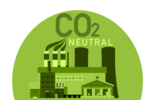News Release from Clean Energy Council
Wind Industry Profile of
Clean energy front and centre as Australians head to the polls
The difference between the two major federal political parties has rarely been starker, while the smaller parties and a raft of prominent independents have added further complexity for voters. This disparity is particularly evident in renewable energy, where all the parties have presented vastly different pathways and levels of ambition to deliver a clean energy future.
Climate and energy policy remains deeply divisive and problematic for the Coalition. The government’s attitude to clean energy has veered from hostility under Tony Abbot to some degree of acceptance under Scott Morrison – who is hoping everyone can forget that lump of coal he waved around in Parliament a few years ago. What voters and businesses are left with though is the government’s inability to land credible policy on energy and few tangible commitments in the lead-up to the election. The Coalition’s only notable climate policy, the rebadged Abbott-era Climate Solutions Fund, will have little effect on the electricity sector. Its continued insistence that Australia will easily meet its 26-28 per cent Paris commitments without any government intervention remains a recipe for failure.
In comparison, the ALP has made strong commitments to take real action on climate change, in the process adopting most of the clean energy industry’s policy asks. The centrepiece is its commitment to cut carbon emissions by 45 per cent and increase Australia’s renewable energy generation to 50 per cent by 2030. The ALP has introduced a raft of policies to deliver on these commitments, including the reintroduction of the National Energy Guarantee, a household battery program, a significant funding boost to the Clean Energy Finance Corporation and a 50 per cent electric vehicle target. While all these announcements are positive for the clean energy industry, there will be a lot of detail to work through should the ALP win the election.
The Greens also have a strong policy agenda that includes a 100 per cent renewable energy target by 2030, zero net emissions by 2040 and a rapid end to coal-fired electricity generation, which could have a significant impact on future energy policy if they end up holding the balance of power in either House of Parliament. And the wildcard in this campaign is the raft of high-profile independents, many of whom are campaigning hard on climate change and clean energy. The rise of the independents is a direct result of the Coalition’s inaction on climate change, and they could play a decisive role in determining the outcome of the election.
The Clean Energy Council has worked hard to raise the profile of clean energy in the lead-up to the election, running a strong and positive campaign and briefing many politicians on the important role of government in setting strong policy to steer the country towards a clean energy future. I wish all the parties and candidates the best of luck on Saturday, and look forward to working with whoever forms government to further advance the growth of clean energy in Australia.
- Source:
- Clean Energy Council
- Author:
- Kane Thornton, Chief Executive, Clean Energy Council
- Link:
- www.cleanenergycouncil.org.au/...
- Keywords:
- Australia, clean energy, poll, government, party, energy, climate policy, carbon emission, renewable energy

























